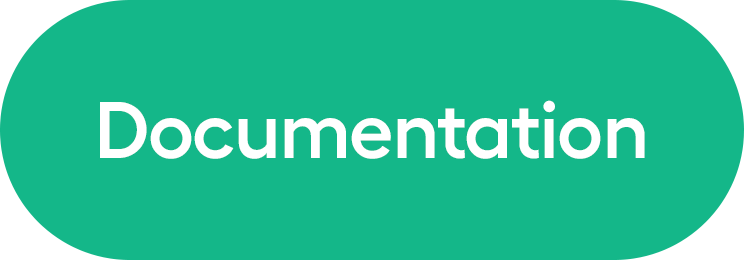🚀 Nanonets-OCR-s
Nanonets-OCR-sは、従来のテキスト抽出を遥かに超える、強力な最先端の画像からマークダウンへのOCRモデルです。このモデルは、文書を構造化されたマークダウンに変換し、インテリジェントなコンテンツ認識とセマンティックタグ付けを行うため、大規模言語モデル(LLM)による下流処理に最適です。
| 属性 |
详情 |
| モデルタイプ |
image-text-to-text |
| ベースモデル |
nanonets/Nanonets-OCR-s |
| タグ |
OCR、unsloth、pdf2markdown |
| ライブラリ名 |
transformers |
✨ 主な機能
Nanonets-OCR-sには、複雑な文書を簡単に処理できるように設計された機能が満載されています。
- LaTeX数式認識:数学の方程式や公式を適切にフォーマットされたLaTeX構文に自動変換します。インライン (
$...$) とディスプレイ ($$...$$) の方程式を区別します。
- インテリジェントな画像説明:文書内の画像を構造化された
<img> タグを使用して説明し、LLM処理に適した形式にします。ロゴ、チャート、グラフなど、さまざまな画像タイプを説明し、その内容、スタイル、コンテキストを詳細に記述します。
- 署名検出と分離:署名を他のテキストから識別して分離し、
<signature> タグ内に出力します。これは、法的およびビジネス文書の処理に重要です。
- 透かし抽出:文書から透かしテキストを検出して抽出し、
<watermark> タグ内に配置します。
- スマートチェックボックス処理:フォームのチェックボックスやラジオボタンを標準化されたUnicode記号 (
‚òê, ‚òë, ‚òí) に変換し、一貫した信頼性の高い処理を行います。
- 複雑な表抽出:文書から複雑な表を正確に抽出し、マークダウンとHTMLの両方の表形式に変換します。
完全なアナウンスを読む | Hugging Face Spaceデモ
💻 使用例
基本的な使用法
from PIL import Image
from transformers import AutoTokenizer, AutoProcessor, AutoModelForImageTextToText
model_path = "nanonets/Nanonets-OCR-s"
model = AutoModelForImageTextToText.from_pretrained(
model_path,
torch_dtype="auto",
device_map="auto",
attn_implementation="flash_attention_2"
)
model.eval()
tokenizer = AutoTokenizer.from_pretrained(model_path)
processor = AutoProcessor.from_pretrained(model_path)
def ocr_page_with_nanonets_s(image_path, model, processor, max_new_tokens=4096):
prompt = """Extract the text from the above document as if you were reading it naturally. Return the tables in html format. Return the equations in LaTeX representation. If there is an image in the document and image caption is not present, add a small description of the image inside the <img></img> tag; otherwise, add the image caption inside <img></img>. Watermarks should be wrapped in brackets. Ex: <watermark>OFFICIAL COPY</watermark>. Page numbers should be wrapped in brackets. Ex: <page_number>14</page_number> or <page_number>9/22</page_number>. Prefer using ‚òê and ‚òë for check boxes."""
image = Image.open(image_path)
messages = [
{"role": "system", "content": "You are a helpful assistant."},
{"role": "user", "content": [
{"type": "image", "image": f"file://{image_path}"},
{"type": "text", "text": prompt},
]},
]
text = processor.apply_chat_template(messages, tokenize=False, add_generation_prompt=True)
inputs = processor(text=[text], images=[image], padding=True, return_tensors="pt")
inputs = inputs.to(model.device)
output_ids = model.generate(**inputs, max_new_tokens=max_new_tokens, do_sample=False)
generated_ids = [output_ids[len(input_ids):] for input_ids, output_ids in zip(inputs.input_ids, output_ids)]
output_text = processor.batch_decode(generated_ids, skip_special_tokens=True, clean_up_tokenization_spaces=True)
return output_text[0]
image_path = "/path/to/your/document.jpg"
result = ocr_page_with_nanonets_s(image_path, model, processor, max_new_tokens=15000)
print(result)
高度な使用法
vLLMを使用する場合
- vLLMサーバーを起動します。
vllm serve nanonets/Nanonets-OCR-s
- モデルで予測を行います。
from openai import OpenAI
import base64
client = OpenAI(api_key="123", base_url="http://localhost:8000/v1")
model = "nanonets/Nanonets-OCR-s"
def encode_image(image_path):
with open(image_path, "rb") as image_file:
return base64.b64encode(image_file.read()).decode("utf-8")
def ocr_page_with_nanonets_s(img_base64):
response = client.chat.completions.create(
model=model,
messages=[
{
"role": "user",
"content": [
{
"type": "image_url",
"image_url": {"url": f"data:image/png;base64,{img_base64}"},
},
{
"type": "text",
"text": "Extract the text from the above document as if you were reading it naturally. Return the tables in html format. Return the equations in LaTeX representation. If there is an image in the document and image caption is not present, add a small description of the image inside the <img></img> tag; otherwise, add the image caption inside <img></img>. Watermarks should be wrapped in brackets. Ex: <watermark>OFFICIAL COPY</watermark>. Page numbers should be wrapped in brackets. Ex: <page_number>14</page_number> or <page_number>9/22</page_number>. Prefer using ‚òê and ‚òë for check boxes.",
},
],
}
],
temperature=0.0,
max_tokens=15000
)
return response.choices[0].message.content
test_img_path = "/path/to/your/document.jpg"
img_base64 = encode_image(test_img_path)
print(ocr_page_with_nanonets_s(img_base64))
docextを使用する場合
pip install docext
python -m docext.app.app --model_name hosted_vllm/nanonets/Nanonets-OCR-s
詳細は GitHub を確認してください。
📚 ドキュメント
BibTex
@misc{Nanonets-OCR-S,
title={Nanonets-OCR-S: A model for transforming documents into structured markdown with intelligent content recognition and semantic tagging},
author={Souvik Mandal and Ashish Talewar and Paras Ahuja and Prathamesh Juvatkar},
year={2025},
}
 Transformers 複数言語対応
Transformers 複数言語対応 Transformers 複数言語対応
Transformers 複数言語対応 Transformers 英語
Transformers 英語 Transformers 英語
Transformers 英語

